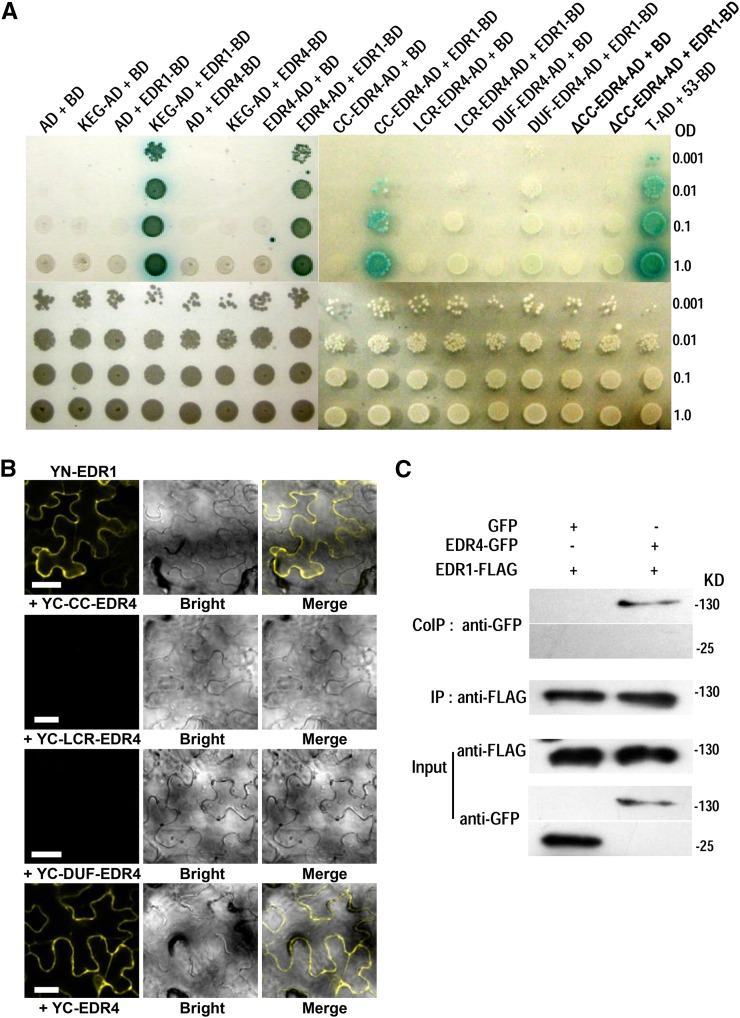Figure 6.
EDR4 Interacts with EDR1.
(A) EDR4 interacts with EDR1 in yeast two-hybrid assays. Yeast cells containing the indicated plasmids were serially diluted from OD600 = 1 and spotted on control medium and on selective medium supplemented with 25 mM 3-amino-1,2,4-triazole and 40 μg/mL X-α-Gal. AD and BD represent pGADT7 and pGBKT7, respectively. T-AD + 53-BD was used as a positive control. CC-EDR4, amino acids 1 to 149 of EDR4, which includes the CC domain; ΔCC-EDR4, a deletion variant of EDR4 protein, which lacks amino acids 1 to 149; LCR-EDR4, amino acids 150 to 491 of EDR4, which includes the four LCR domains; DUF-EDR4, amino acids 492 to 615 of EDR4, which includes the Duf3133 domain.
(B) EDR4 interacted with EDR1 in BiFC assays in N. benthamiana. EDR1 was fused to the N-terminal fragment of YFP, and EDR4 (full length or deletion form of EDR4) was fused to the C-terminal fragment of YFP. YFP fluorescence indicates an interaction between the two proteins. Bars = 50 μm.
(C) Expression and Co-IP of pEDR1-EDR1-FLAG and pEDR4-EDR4-GFP in Arabidopsis. Total protein was extracted from 4-week-old transgenic plants expressing both EDR1-FLAG and EDR4-GFP. Plants expressing EDR1-FLAG and GFP (left panels) were used as negative controls. The EDR1-FLAG protein was immunoprecipitated with anti-FLAG antibody, and the presence of EDR4-GFP or GFP protein was detected by immunoblot analysis with anti-GFP antibody.
These experiments were repeated three times with similar results.

